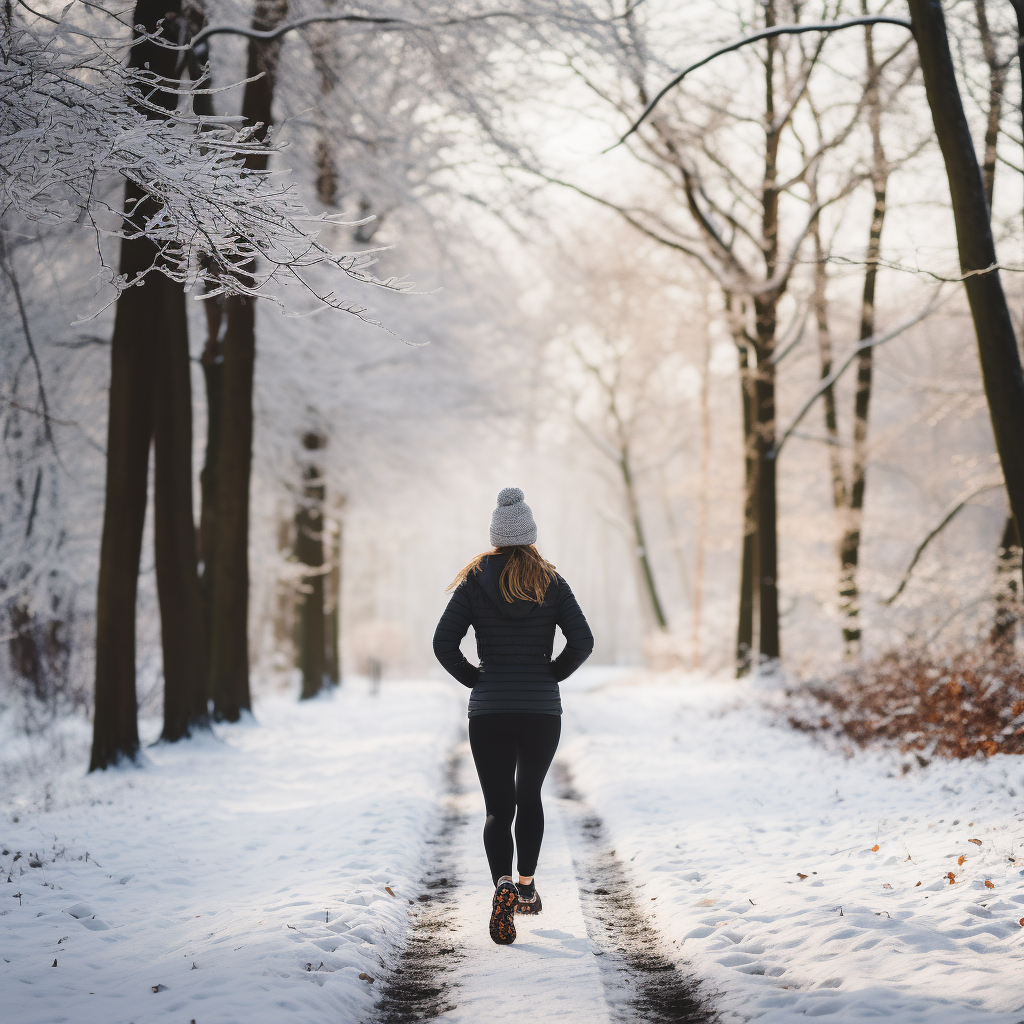How Brisk Walks & Natural Light Can Boost Your Health
Walk away your winter blues
As the chill of winter sets in, it's easy to hunker down indoors, sipping on hot cocoa and binge-watching your favorite shows. But, there's a hidden gem in the cold months that can significantly enhance your well-being – winter walks. This article dives into the myriad benefits of incorporating brisk walks into your winter routine, emphasizing the importance of maintaining fitness and optimizing natural light during the colder months.
The Magic of Brisk Winter Walks
Bolstering Your Immune System
Winter often brings with it a host of health challenges, from common colds to the seasonal flu. One effective way to fortify your immune system is through regular physical activity. Brisk winter walks, in particular, offer a unique set of health benefits. The cold air works to invigorate your body, increasing your heart rate and circulation. This enhanced blood flow is crucial in transporting immune cells throughout your body, making you more resilient against winter ailments.
Maintaining Fitness Levels
While gyms and indoor workouts are great, there's something refreshing about exercising outdoors. Brisk walks during winter provide an excellent opportunity to maintain your fitness levels. Walking in colder weather requires more energy, leading to higher calorie burn. Additionally, navigating through snow or uneven terrain engages different muscle groups, improving your overall strength and balance.
Leveraging the Power of Natural Light
Boosting Your Mood
Shorter days and longer nights can lead to a decrease in sunlight exposure, which is closely linked to mood. The winter sun, even on overcast days, is a potent source of natural light that can help alleviate symptoms of Seasonal Affective Disorder (SAD) and boost your overall mood. A brisk walk during daylight hours ensures that you soak up enough natural light, stimulating the production of serotonin – the feel-good neurotransmitter.
Enhancing Vitamin D Absorption
Vitamin D, often dubbed the 'sunshine vitamin,' is crucial for bone health, immune function, and overall well-being. Winter walks under the sun, even if it's peeking through clouds, can help your skin synthesize Vitamin D. This is particularly important in winter when Vitamin D deficiency tends to be more common due to reduced sunlight exposure.
Tips for Enjoyable & Safe Winter Walks
Dress Appropriately: Layer up to stay warm, but avoid overdressing as you'll heat up once you start moving. Waterproof shoes with good traction are essential for snowy or icy conditions.
Stay Hydrated: Cold weather can be deceiving when it comes to hydration. Ensure you drink water before and after your walks.
Plan Your Route: Choose well-lit paths and be mindful of icy patches. If possible, walk during the brightest time of the day.
Invite a Friend: Not only does this make your walks more enjoyable, but it also adds a layer of safety and accountability.
Incorporating Winter Walks into Your Routine
Start Small: Begin with short walks and gradually increase the duration as you get more comfortable with the cold.
Set a Schedule: Consistency is key. Try to incorporate walks into your daily routine, whether it’s a morning stroll to start the day or an evening walk to decompress.
Mix It Up: Explore different routes and terrains to keep your walks exciting and challenging.
Mindfulness & Reflection: Use this time to clear your mind, reflect, or even meditate as you walk.
What are yout thoughts?




